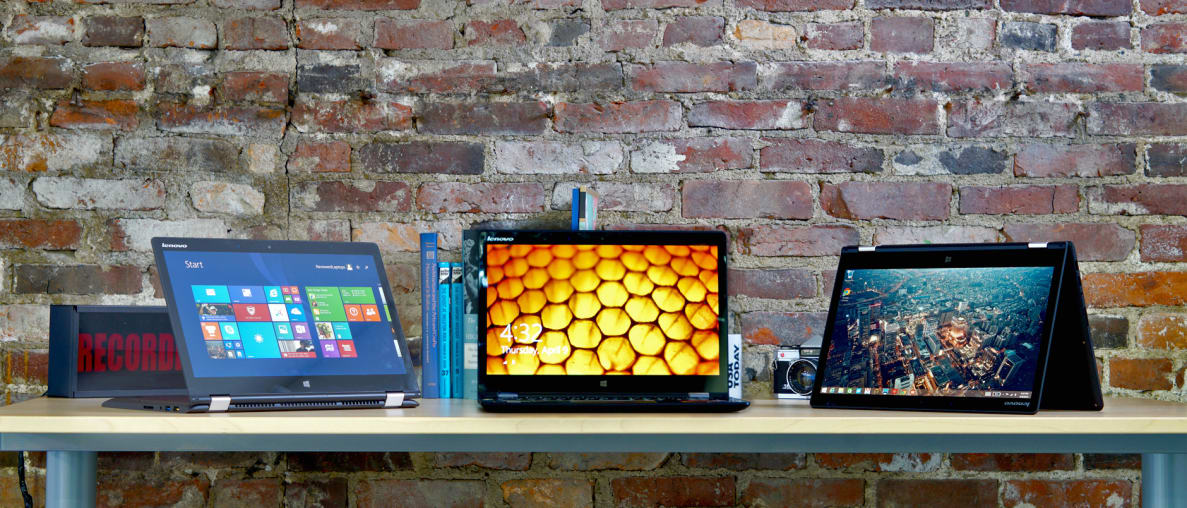The Lenovo Yoga 3 (14-inch) (MSRP: $1,099.99, $949.99 online) is the standard-bearer of the Yoga line for 2015. Like past "Yoga" models its hinge allows you to use it in any of four different modes—laptop, stand, tent, and tablet—and has enough raw performance between its processor and RAM that it can manage almost any task you’d want to do.
But, while it's generally powerful, the Yoga 3 (14-inch) is ultimately just an average laptop that does a few things well without doing anything extraordinary. If you’re just looking for a reliable machine that can handle most tasks and lithely switch orientations for a better media experience, look no further.
Design
Business with a side of casual
Unlike other Lenovo laptops, the Yoga 3 (14-inch) has a solid amount of heft to it. While its 13.18 by 9.03 by 0.72-inch frame screams portability, it tips the scales at a surprising 3.52 pounds—far heavier than similar laptops. While it might not look very impressive, it certainly feels better once you get it in your hands. The Yoga 3 (14-inch)—and its many modes—shine brightest when you pick it up and handle it away from your desk.
{{ photo_gallery name="Tour" }}
Like most other laptops on the market right now, your color choices are exclusively neutral. Our version came in black—the only other option is light silver—and other than a chrome Lenovo logo on the lid, there isn’t any other ornamentation. Like Lenovo's ThinkPads, it’s all business when it comes to design.
The outside of the Yoga 3 has a nice matte finish that practically repels fingerprints. This is a case that will keep looking great no matter how much you handle it. Ringing the laptop is a band of textured rubber, which looks and feels great, and gives perfect traction for opening the lid and shifting to one of the other “modes” available. Speaking of, lifting the lid reveals a 14-inch, 1920x1080 display, which looks good, but not great. There are plenty of other, better displays on the market, but if Lenovo saved some money by opting for a good ol' 1080p part, we're okay with that.
Below the display, you’ll find the backlit, chiclet style keyboard and a fairly large trackpad. Both rest in a deck that has a texture like smoothed wood grain—which feels good compared to the sterile metal of other laptops. The keys feel soft to type on and while it didn’t affect my typing speed, they can feel a little awkward if you’re used to the clacking keys of the laptops. Despite this, the keys still have great travel, but the top case did exhibit some flex while vigorously typing. The trackpad, on the other hand, is large and was—despite some occasional hiccups that stemmed from poor palm detection and dodgy scrolling—pretty reliable overall.

The keyboard is great to type on and the backlight is always a welcome feature.
Like other ultra-thin ultrabooks, the Yoga 3 (14-inch) only has a few ports on either side. There are two USB 3.0 ports—one doubles as the port for the AC adapter, while the other can be used to charge a device even while the computer is asleep. There’s also a single USB 2.0 port, a 4-in-1 SD card reader, a micro HDMI port, and a headset port. That’s it. While it may not seem like much, there should be enough that the average user won't have to worry about buying something like a USB hub.
You’ll also find a few buttons on the side, including a volume rocker, power button, auto-rotate toggle, and a OneKey Recovery button that launches a system backup or recovery program.
All of that is pretty standard for laptops nowadays. The Yoga 3 (14-inch) doesn’t start to shine until you take a look at its hinges. That’s right—hinges. They might not seem like much at first glance, but they're a keystone of the entire Yoga line.
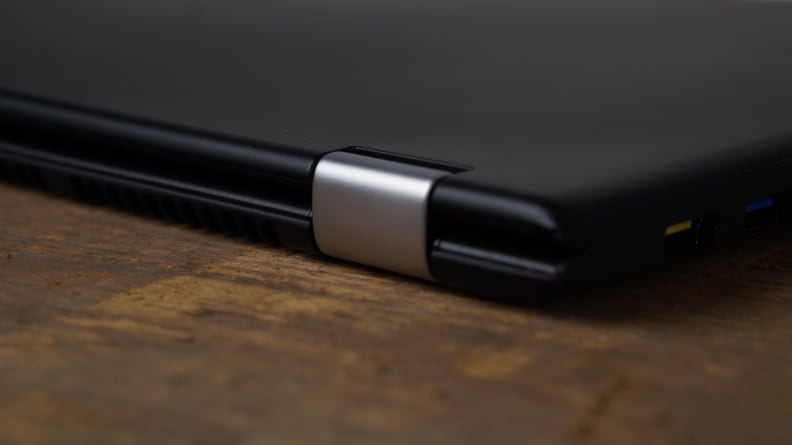
Lenovo's hinge design is the key to its different use modes.
You see, the lid can tip back—back, back, back, all the way around—until you’re left with something that looks like a tablet. Windows 8.1 was designed to work equally as well on both laptops and tablets, so why not give you both in a single package? In fact, while Lenovo advertises four modes to use your Yoga in—laptop, tent, stand, and tablet—you can actually use it anywhere in that near 360-degree arc.
It’s unfortunate that the Yoga 3 doesn’t have the aluminum and steel watchband hinge found in the Yoga 3 Pro. Instead, the hinge on the Yoga 3 is the one part of this laptop that feels as unimpressive as it looks.
For the more pessimistic, laptop and tablet mode may seem to be the most useful, while tent and stand mode don’t have as many practical uses. Truth be told, we were on the same side until we spent more time with the Yoga. Turns out, stand mode is great for watching movies—Netflix anyone?—and tent mode came in handy when paired with Yoga Chef, a recipe app included for free.
Software
Windows 8.1 with the classic Yoga apps
If you’ve bought or updated a Windows PC in the past few years you’ve likely gotten a taste of the Windows 8.1 experience. Microsoft aimed to create a platform that could work equally well with a traditional desktop was well as with touchscreen enabled devices like a tablet.
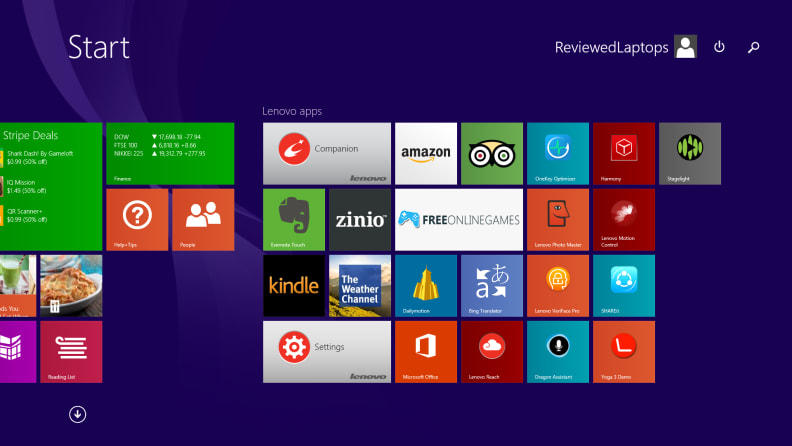
You'll find the typical selection of Lenovo apps in the Start Menu.
Unfortunately, before you can explore what Windows 8.1 has to offer you’ll first have to wade hip-deep into the sea of useless apps that manufacturers pre-install on new systems. Lenovo always offers a robust selection of such “bloatware,” but they also always manage to sneak a few apps in that are surprisingly helpful.
Just like the Lenovo Yoga 3 Pro, the most useful app has to be Dragon Assistant, which comes free. If you haven’t heard of it before, Dragon is the industry standard when it comes to dictation. Just like Siri, Google Now, and the recent Cortana from Windows, Dragon can be used to open or switch between apps. You can even dictate whole messages with a surprising amount of accuracy.
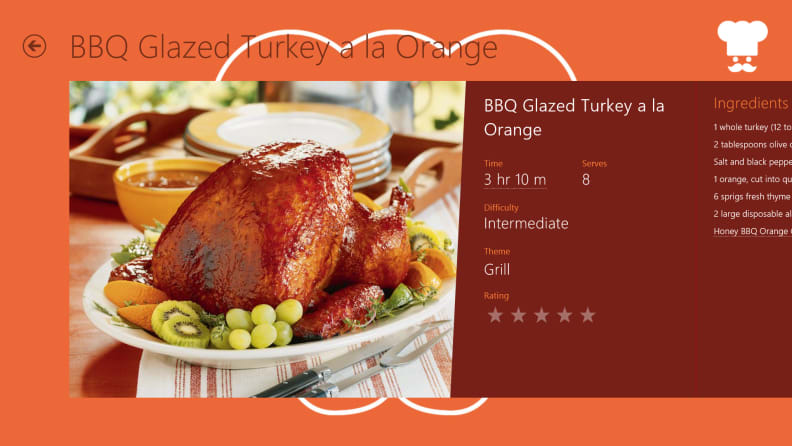
From simple to more complex, recipes are a lot easier to read and manage.
Yoga Chef is another great app provided by Lenovo, assuming you prefer cooking over takeout. There’s a pretty diverse database of recipes to choose from and the layout is simple enough that you shouldn’t have a problem whipping up a BBQ Glazed Turkey a la Orange. Not to mention, if you switch to “tent” or “stand” mode and use Dragon Assistant, you’ll get a prominent, hands-free display without having to worry about getting flour all over your nice laptop.
While your mileage may vary, the rest of the pre-loaded apps are far less useful. Oh, and if you’re worried about the recent Superfish exploit on Lenovo computers, you don’t have to be. The Yoga 3 (14-inch) ships squeaky-clean and Superfish-free.
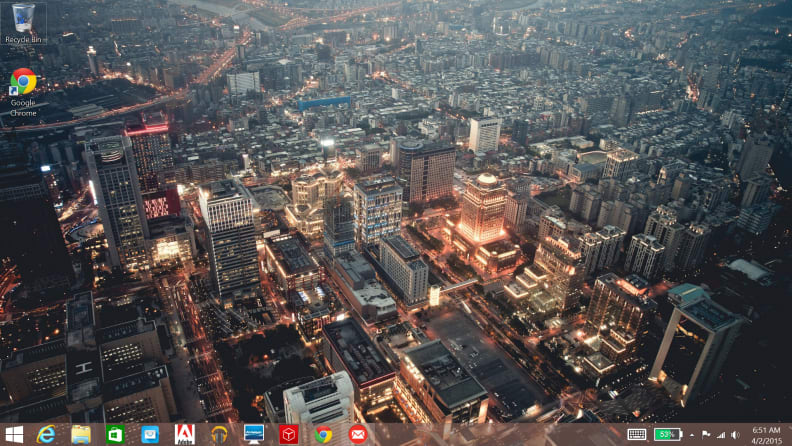
The quick launch bar at the bottom of the screen is overflowing with pre-installed apps.
Performance
The definition of an average ultrabook
It's pretty standard fare under the hood. The entry-level model comes packed with a fifth-generation Intel Core i5 processor that’s clocked at 2.20 GHz. By not going with Core M—like the Yoga 3 Pro—the Yoga 3 has much better performance and can handle a heavier workload.
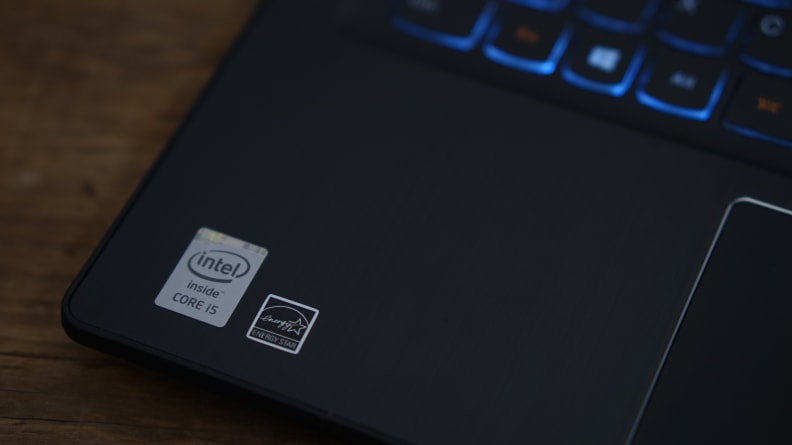
The fifth generation Intel Core i5 comes standard in the Yoga 3 (14-inch).
The Core i5 is the perfect middle-of-the-road option in the Core series and you won’t encounter any problems unless you get into incredibly intensive tasks. For that, you might want to shell out the extra $150 for the Core i7 model of the Yoga 3 (14-inch) on the Lenovo website. The entry-level configuration also comes with 4GB of RAM, but we opted to increase that to 8GB to help run multiple programs at one time.
The Yoga 3 (14-inch) is running an Intel HD Graphics 5500 GPU. It’s the only option for the Yoga 3 (14-inch) line, so you’ll have to take what you can get. Don’t worry though, it’s capable of handling most apps and tasks, and will only falter when you really push its limits. Take Metro 2033: Last Light for example. It’s an intense game when it comes to graphics and on high settings, the Yoga 3 (14-inch) had an average frame rate of 5 frames per second. It’s unplayable on those settings. You’d be better off sticking to less intensive games—like a replay of the classic Portal 2 or any kind of browser-based game.
There are only two options when it comes to storage space on the Yoga 3 (14-inch). You can either go for a 128GB SSD or a 256GB SSD. No matter which you choose, the SSD has the added benefit of faster boot times for your PC as well as faster loading times for apps.
Perhaps one of the most important features of any new laptop is how long the battery lasts. What good is portability if you’re tethered to a wall outlet all day? At the top of the chain is a laptop like the MacBook Air, which lasted 5 hours in our intensive battery test that's designed to drain a battery as quick as possible. The Yoga 3 (14-inch), on the other hand, lasted about 2.5 hours. While that might not seem like a good result in comparison, it's actually pretty average for a lot of laptops. Don't worry though, you'll still be able to last an entire day as long as you leave the power-sucking tasks to when you’re plugged in.
Conclusion
It's not great, but good enough
At first glance, there doesn’t seem to be anything special about the Yoga 3 (14-inch). And on further inspection, there really isn’t anything special about the Yoga 3 (14-inch). But that’s okay—and sort of the point.
Like Lenovo's ThinkPad X1 Carbon series, the Yoga isn't meant to turn heads with a flashy, unibody aluminum case. Instead, this is a laptop that's meant to get to work, with a matte black coating that won't stand out in a crowd. Even the hinge, which allows it to bend backwards to become a giant tablet of sorts, is low-key.
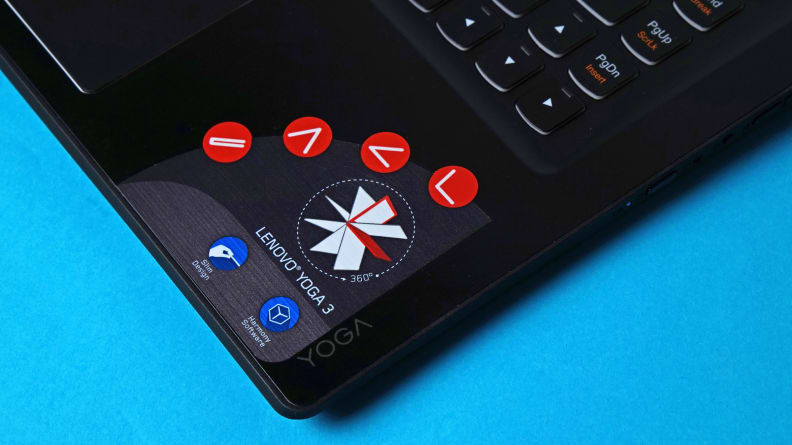
With its hinge, the lid of the Yoga 3 can bend almost 360-degrees backward.
From a performance perspective, the Yoga 3 that we've reviewed is competitive. It's also wholly customizable, letting you tune it to whatever you need. Once you do, you're left with a laptop that gives you exactly what you need to get your job done—no more, no less.
If you’re sold on everything but the portability of the Yoga 3 (14-inch), you might want to take a look at the Yoga 3 Pro (MSRP: $1,199.99). It has a similar performance to the Yoga 3 (14-inch, but in a package that's much more portable. The Yoga 3 Pro lid still has the almost 360-degrees of flexibility and it's ridiculously thin thanks to its Core M processor.
If the lid flexibility really isn’t doing it for you, you’d be much better off with something like the Dell XPS 13 (MSRP: $1,399.99 comparable configuration). It has a near-borderless display that helps it fit 13-inches of screen into a case normally reserved for 11-inch laptops.
While you're paying a little more compared to the Yoga 3 (14-inch), the XPS 13 is an amazing blend of power and portability. It’s our new benchmark for what makes an ultrabook great. But if you're not looking for great—and want to save a little money in the process—the Yoga 3 isn't a bad choice at all.
Meet the tester
Coming from Buffalo, NY, Nick studied media production and arts journalism. When he’s not writing about tech Nick can be found playing video games and keeping up on the latest in pop culture.
Checking our work.
Our team is here to help you buy the best stuff and love what you own. Our writers, editors, and experts obsess over the products we cover to make sure you're confident and satisfied. Have a different opinion about something we recommend? Email us and we'll compare notes.
Shoot us an email